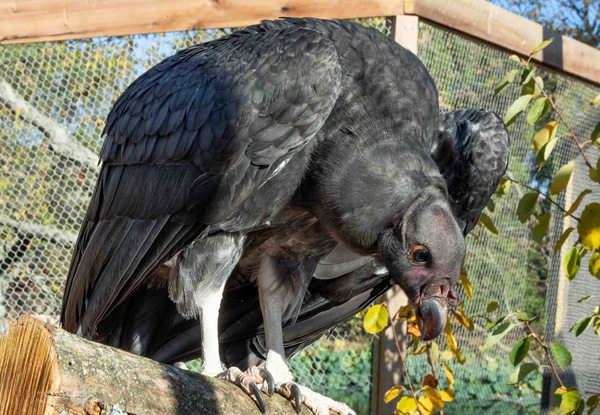King Vulture
King vultures have the largest brains and strongest beaks of all New World vultures. They are also dedicated parents and often mate for life.
Day of Creation: five
Biblical Kind: New World vulture (includes all New World vulture species)
Status: least concern
Length: 2.2–2.7 feet (0.7–0.8 meters)
Weight: 6–10 pounds (2.7–4.5 kilograms)
Habitat: tropical lowland forests, grasslands, and marshes from Mexico through Argentina
Lifespan: estimated 30 years, but has lived over 70 years under human care
Diet: carrion; occasional live prey and fruit when carrion is scarce
Family Life: solitary
Reproduction: single eggs hatch after 52–58-day incubations
Fun Facts
Adult king vultures can be easily identified by their colorful heads, orange caruncles, and striking black, gray, and white coloration. With a wingspan of 4–7 feet (1.2–2.1 meters), they are the third largest New World vultures. While they are weak walkers, they are powerful fliers and may soar for hours, only flapping their wings occasionally. They use their sight to find carrion or to follow vultures with a strong sense of smell to food.
As scavengers, vultures are keystone species vital to the health of their environments. By cleaning up carcasses, they reduce disease. Very acidic digestive systems containing two anaerobic bacteria, Clostridia and Fusobacteriota (which would normally be pathogenic in other animals), help them break down toxins from decaying flesh. Their bald heads prevent blood, bacteria, and other debris from festering in feathers around their faces and help sterilize them through sunlight.
King vultures poop on their legs to cool off. This behavior is called urohidrosis (yur-oh-hy-DROH-sis).
Two theories exist explaining the name “king” vulture. It could refer to the fact that they displace smaller vulture species from carcasses, or it could be derived from Mayan legends where they were kings that served as messengers between gods and humans.
King vultures are one of the most-seen birds in Mayan codices. They believed their blood and feathers could cure diseases, and the king vulture was used to represent the 13th day of the month in their calendar. These birds are still featured on the stamps of several Central and South American countries.
